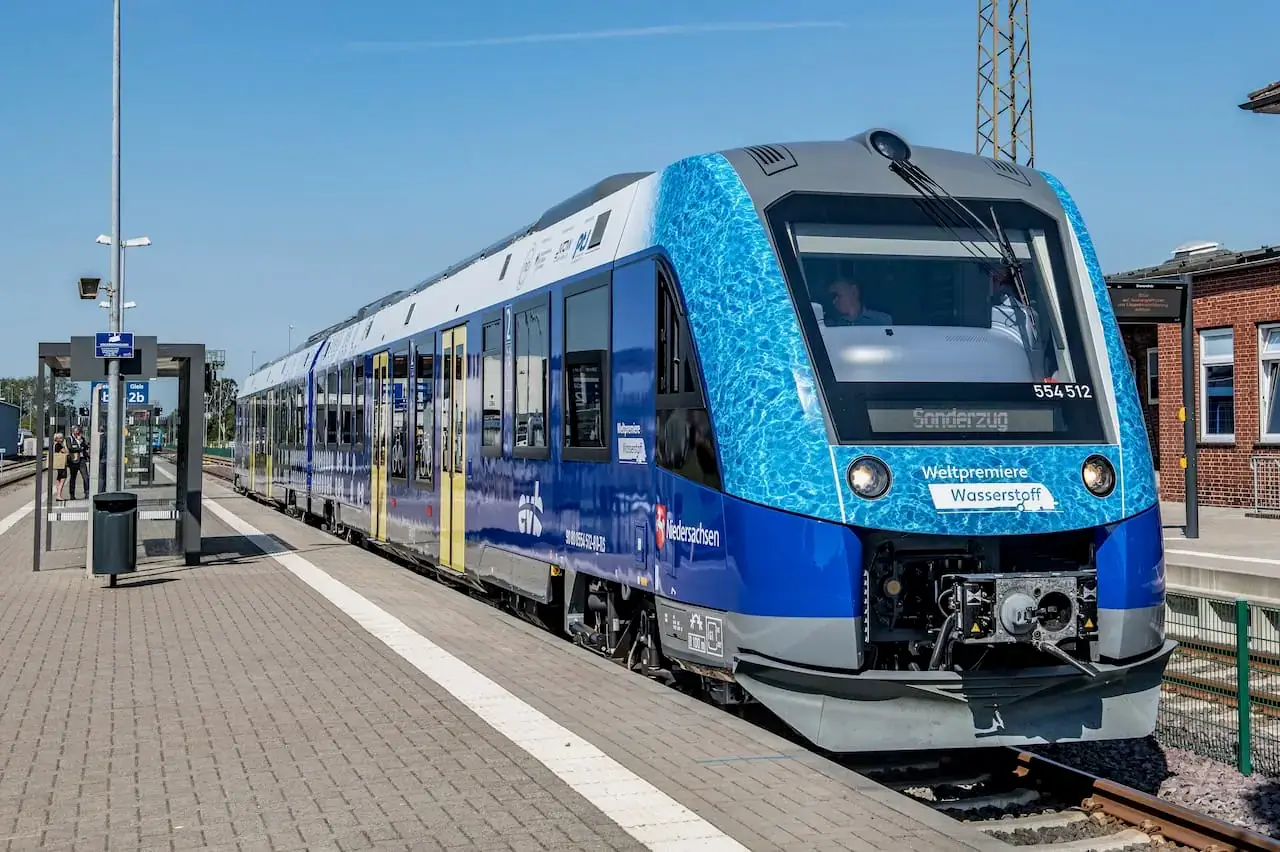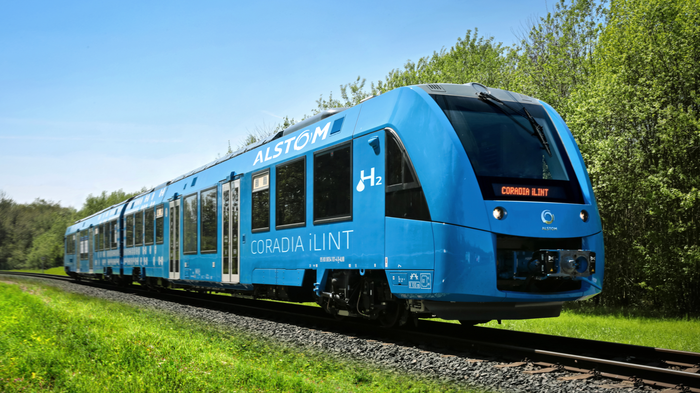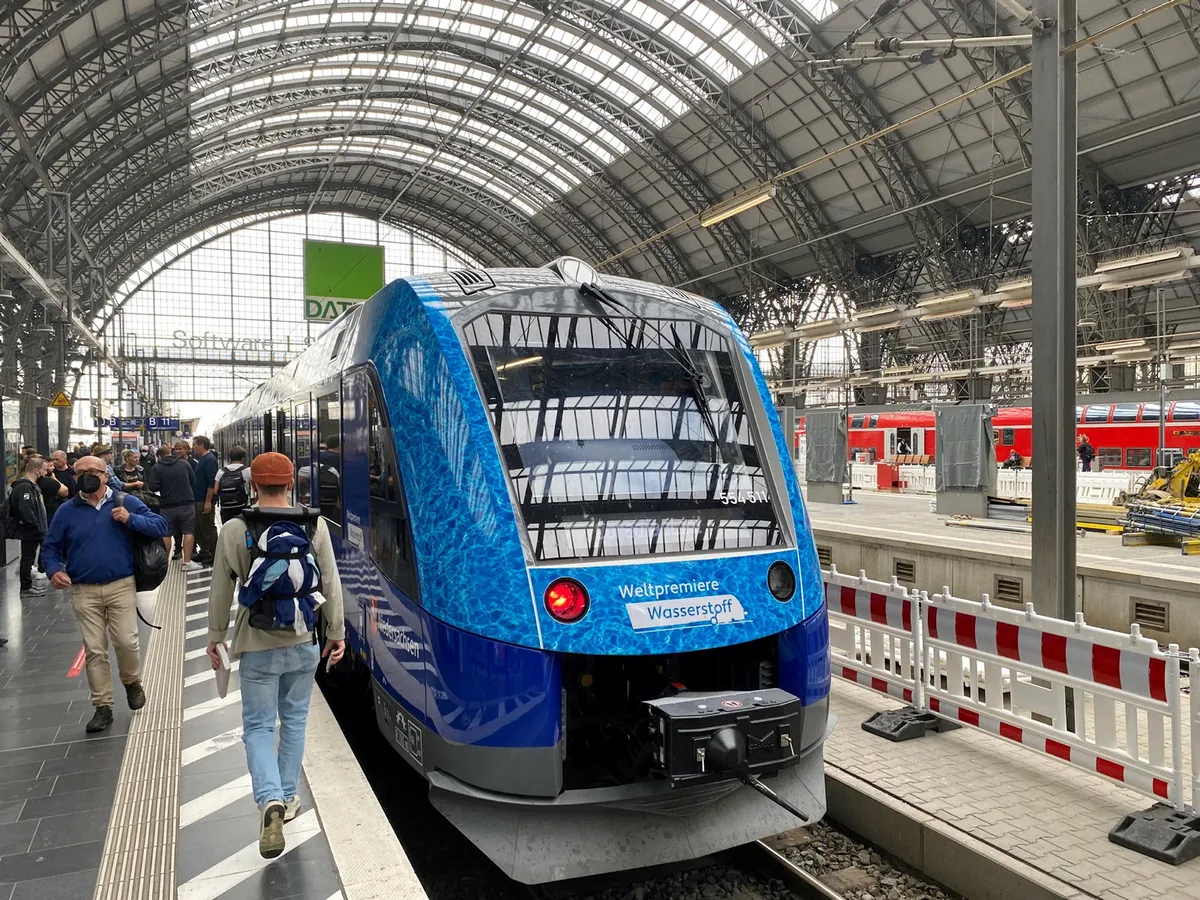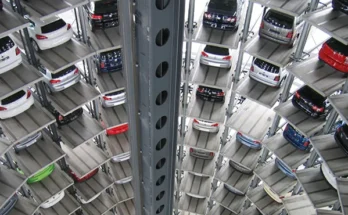Germany is taking a bold step toward revolutionizing railway transport with the deployment of hydrogen-powered trains. This groundbreaking initiative marks a major advancement in sustainable, emission-free rail travel. By integrating Lithium Titanate Oxide (LTO) batteries, these trains are set to optimize performance during acceleration and braking, enhancing efficiency while significantly reducing environmental impact.
The Future of Rail Transport: Hydrogen-Powered Trains

For decades, trains have relied on diesel engines or traditional electric power. While electric trains are more environmentally friendly than their diesel counterparts, they require an extensive and expensive infrastructure of overhead power lines. Hydrogen-powered trains offer a compelling alternative, providing the benefits of electrification without the need for costly infrastructure expansion.
Hydrogen trains operate using fuel cells that convert hydrogen gas into electricity, emitting only water vapor as a byproduct. This technology eliminates greenhouse gas emissions, making these trains a sustainable solution for regions that lack widespread electrification. In Germany, where the push for green energy solutions is strong, hydrogen-powered trains are becoming a key component of the country’s commitment to reducing its carbon footprint.
The Role of Lithium Titanate Oxide (LTO) Batteries
What sets Germany’s hydrogen-powered trains apart is their integration of advanced Lithium Titanate Oxide (LTO) batteries. These batteries play a crucial role in optimizing the trains’ performance, particularly during acceleration and braking. Unlike conventional lithium-ion batteries, LTO batteries have a unique composition that allows for ultra-fast charging, a longer lifespan, and enhanced safety.

When the train accelerates, the LTO batteries supply additional power to the electric motors, reducing strain on the hydrogen fuel cells and improving energy efficiency. During braking, the train’s kinetic energy is captured and stored in the LTO batteries, a process known as regenerative braking. This stored energy can then be reused for subsequent acceleration, further improving overall efficiency and reducing hydrogen consumption.
Advantages of Hydrogen-Powered Trains with LTO Batteries
The combination of hydrogen fuel cells and LTO batteries offers several advantages that make these trains a game-changer for modern rail transport:
- Zero Emissions: Hydrogen-powered trains produce only water vapor, eliminating air pollution and greenhouse gas emissions associated with diesel locomotives.
- Energy Efficiency: The use of LTO batteries enhances energy efficiency by reducing hydrogen consumption and making use of regenerative braking technology.
- Faster Charging and Longer Lifespan: LTO batteries can charge much faster than traditional lithium-ion batteries and have a significantly longer lifespan, reducing maintenance costs and downtime.
- Reduced Dependence on Electrification Infrastructure: Unlike electric trains that require extensive overhead power lines, hydrogen trains can operate on non-electrified tracks, making them ideal for remote and rural areas.
- Lower Noise Pollution: Hydrogen-powered trains operate more quietly than diesel engines, reducing noise pollution and enhancing passenger comfort.
Germany’s Commitment to Green Transportation
Germany has been a pioneer in sustainable transportation initiatives, and the deployment of hydrogen-powered trains is a testament to its dedication to reducing reliance on fossil fuels. In 2018, Germany introduced the world’s first hydrogen-powered passenger trains, and since then, efforts have continued to expand their use.
The latest deployment of these trains, equipped with LTO battery technology, represents a significant leap forward. Several German states have already placed orders for hydrogen trains, and the government is actively investing in the development of hydrogen infrastructure, including refueling stations and hydrogen production facilities powered by renewable energy sources.
The Future of Hydrogen-Powered Trains Worldwide
Germany’s success with hydrogen trains is setting an example for other nations seeking greener transportation alternatives. Countries such as France, the United Kingdom, and Japan are closely monitoring Germany’s progress, with some already planning their own hydrogen-powered rail projects.
As hydrogen fuel cell technology continues to evolve and battery advancements like LTO become more widespread, the future of rail transport looks increasingly sustainable. With Germany leading the charge, hydrogen-powered trains may soon become a global standard, transforming the way people and goods move while minimizing environmental impact.
Conclusion
The deployment of hydrogen-powered trains with LTO batteries in Germany is a milestone in the pursuit of sustainable and efficient rail transport. By leveraging hydrogen fuel cells and cutting-edge battery technology, these trains promise a cleaner, greener future for railway networks worldwide. As more countries recognize the benefits of this innovation, hydrogen-powered rail systems could soon become a cornerstone of global transportation, paving the way for a truly sustainable future.




